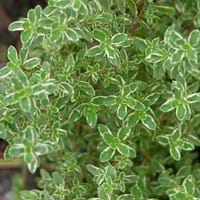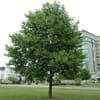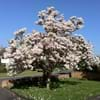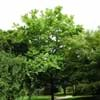Life Span
Perennial
Perennial
Origin
Northeastern United States, Mid-Atlantic United States, Southeastern United States, Central United States
Asia, Europe
Types
Ardis, Arnold, Aureomarginatum
Elfin Thyme, Pink Chintz Thyme, Lime Thyme, White Moss Thyme, Lavender Thyme, Silver Needle Thyme
Number of Varieties
Not Available
Habitat
Bluffs, low mountains, Moist Soils, Woodlands
Rocky areas
USDA Hardiness Zone
5-9
6-9
Sunset Zone
1a, 1b, 2a, 2b, 3a, 3b, 4, 5, 6, 7, 8, 9, 10, 11, 12, 14, 15, 16, 17, 18, 19, 20, 21, 22, 23
1a, 1b, 2a, 2b, 3a, 3b, 4, 5, 6, 7, 8, 9, 10, 11, 12, 13, 14, 15, 16, 17, 18, 19, 20, 21, 22, 23, 24
Habit
Pyramidal
Cushion/Mound-forming
Minimum Width
Not Available
Flower Color
Orange, Light Yellow
Crimson, Lavender, Pink, White
Flower Color Modifier
Bicolor
Unknown
Fruit Color
Lime Green, Brown
Not Available
Leaf Color in Spring
Green, Light Green
Green
Leaf Color in Summer
Green
Gray Green
Leaf Color in Fall
Yellow, Light Yellow, Yellow green
Gray Green
Leaf Color in Winter
Not Available
Gray Green
Leaf Shape
Irregular
Tiny
Plant Season
Spring, Fall
Summer
Sunlight
Full Sun, Partial Sun
Full Sun, Part sun
Growth Rate
Medium
Medium
Type of Soil
Clay, Loam
Loamy, Sandy
The pH of Soil
Acidic, Neutral
Neutral, Slightly Alkaline
Soil Drainage
Average
Well drained
Bloom Time
Late Spring
Fall, Spring, Summer, Winter
Tolerances
Soil Compaction
Drought
Where to Plant?
Ground
Container, Ground
How to Plant?
Seedlings
Seedlings, Stem Planting
Plant Maintenance
Low
Medium
Watering Requirements
Do Not over Water, Keep the ground moist but not water-logged, Requires regular watering
Do not water frequently, Does not require lot of watering, Requires watering in the growing season, Water occasionally
In Summer
Ample Water
Lots of watering
In Spring
Moderate
Moderate
In Winter
Average Water
Average Water
Soil pH
Acidic, Neutral
Neutral, Slightly Alkaline
Soil Type
Clay, Loam
Loamy, Sandy
Soil Drainage Capacity
Average
Well drained
Sun Exposure
Full Sun, Partial Sun
Full Sun, Part sun
Pruning
Prune ocassionally, Remove dead branches
Prune for shortening long shoots, Prune if you want to improve plant shape, Prune lower leaves, Requires extensive pruning
Fertilizers
All-Purpose Liquid Fertilizer, fertilize in spring, Fertilize the soil instead of direct applying, Mulch
All-Purpose Liquid Fertilizer
Pests and Diseases
fusarium canker, nectria canker, yellow-poplar weevil
Alternaria leaf blight, Aphids, Botrytis collar rot, Rhizoctonia Root Rot, Spider mites
Plant Tolerance
Soil Compaction
Drought
Flower Petal Number
Not Available
Not Available
Fragrant Bark/Stem
No
Yes
Foliage Texture
Coarse
Fine
Foliage Sheen
Matte
Matte
Attracts
Birds
Butterflies
Allergy
Not Available
Diarrhea, Skin irritation
Aesthetic Uses
Showy Purposes
Beautification, Showy Purposes, Used for decorating walls, fences, gates, hedges, etc.
Beauty Benefits
Not Available
Not Available
Environmental Uses
Shadow Tree, Shelter for wildlife
Air purification
Medicinal Uses
Arthritis, Digestion problems, Fever, Inflammation, Wounds
Arthritis, Bronchitis, Chronic fatigue, Cough, Gastritis, Hair Loss, Insomnia, Kidney problems, Muscle Pain, Skin irritation, Snoring, Sore throat, Stomach pain, Swelling
Part of Plant Used
Whole plant
Whole plant
Other Uses
Food for animals, Grown for shade, Used as Ornamental plant, Used in Furniture
Air freshner, Cosmetics, Economic Purpose, Employed in herbal medicine, Oil is used in perfume, soaps, creams, etc., Showy Purposes, Used As Food, Used as Ornamental plant, Used for fragrance
Used As Indoor Plant
No
Yes
Used As Outdoor Plant
Yes
Yes
Garden Design
Feature Plant, Shade Trees, Street Trees
Container, Edible, Herb, Rock Garden
Botanical Name
LIRIODENDRON tulipifera
Thymus vulgaris
Common Name
Tulip Poplar, Yellow Poplar
Thyme
In Hindi
ट्यूलिप पेड़
अजवायन के फूल
In German
Tulpenbaum
Thymian
In Spanish
árbol de tulipán
Tomillo
In Greek
δέντρο τουλίπα
θυμάρι
In Portuguese
árvore de tulipa
Tomilho
In Polish
tulipanowiec
Tymianek
In Latin
Tulipa arbore
Thymum
Phylum
Tracheophyta
Magnoliophyta
Class
Magnoliopsida
Magnoliopsida
Order
Magnoliales
Not Available
Family
Magnoliaceae
Labiatae
Genus
Liriodendron
Thymus
Clade
Angiosperms, Magnoliids
Not Available
Tribe
Not Available
Not Available
Subfamily
Not Available
Not Available
Importance of Tulip Tree and Thyme
Want to have the most appropriate plant for your garden? You might want to know the importance of Tulip Tree and Thyme. Basically, these two plants vary in many aspects. Compare Tulip Tree and Thyme as they differ in many characteristics such as their life, care, benefits, facts, etc. Every gardener must at least have the slightest clue about the plants he wants to plant in his garden. Compare their benefits, which differ in many ways like facts and uses. The medicinal use of Tulip Tree is Arthritis, Digestion problems, Fever, Inflammation and Wounds whereas of Thyme is Arthritis, Bronchitis, Chronic fatigue, Cough, Gastritis, Hair Loss, Insomnia, Kidney problems, Muscle Pain, Skin irritation, Snoring, Sore throat, Stomach pain and Swelling. Tulip Tree has beauty benefits as follows: Not Available while Thyme has beauty benefits as follows: Not Available.
Compare Facts of Tulip Tree vs Thyme
How to choose the best garden plant for your garden depending upon its facts? Here garden plant comparison will help you to solve this query. Compare the facts of Tulip Tree vs Thyme and know which one to choose. As garden plants have benefits and other uses, allergy is also a major drawback of plants for some people. Allergic reactions of Tulip Tree are Not Available whereas of Thyme have Diarrhea and Skin irritation respectively. Having a fruit bearing plant in your garden can be a plus point of your garden. Tulip Tree has no showy fruits and Thyme has no showy fruits. Also Tulip Tree is not flowering and Thyme is flowering. You can compare Tulip Tree and Thyme facts and facts of other plants too.





